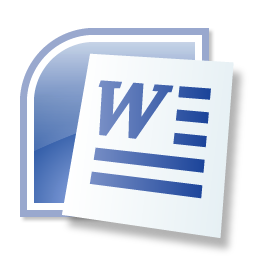| Staramy się zlokalizować na naszej stronie internetowej w tak wielu językach, jak to możliwe, jednak ta strona jest aktualnie maszyna przetłumaczony przy użyciu Google Translate. | blisko |
-
-
produkty
-
zasoby
-
wsparcie
-
firma
-
Login
-
.lxfml Rozszerzenie pliku
Twórca programu: LEGOTyp pliku: LEGO Digital Designer XML FileJesteś tu, bo masz plik, który ma rozszerzenie kończące się .lxfml. Pliki z rozszerzeniem .lxfml może być uruchomiony tylko przez niektóre aplikacje. Jest możliwe, że .lxfml plików są pliki z danymi, a nie dokumenty lub nośniki, co oznacza, że nie powinno się w nie oglądać w ogóle.to, co jest .lxfml plik?
Rozszerzenie pliku LXFML jest używany przez LEGO Digital Designer XML File opracowanej przez LEGO. LDD to program cyfrowa oferowana za darmo przez grupy LEGO i części LEGO projekt byME który dostępny jest dla platform Windows i Mac. Pozwala użytkownikom wirtualnie budować modele za pomocą klocków Lego za pomocą Computer Aided Design. CAD tworzy optymalizację, modyfikacji i analizowania wzoru przez pomocą komputera. Pozwala on użytkownikom na projekt rysunek techniczny z oprogramowaniem komputerowym. CAD bardzo poprawia design, poprawić komunikację poprzez rysunek i tworzenie bazy danych produkcji. Produkcja jest za pośrednictwem elektronicznego formularza plików. Wdraża również grafiki oparte zarówno rastrowych i wektorowych, które pokazuje ogólny wygląd obiektów. Cad jest nową formą ręcznego sporządzania projektów technicznych i rysunków technicznych. To zrewolucjonizowało sposób tworzone są rysunki i przeglądać i uczynił z niego jeden krok do przodu w zakresie informacji potrzebnych inżynierów i projektantów.jak otworzyć .lxfml plik?
Uruchom .lxfml plik, lub dowolny inny plik na komputerze, klikając dwukrotnie go. Jeśli Twoje skojarzenia plików są ustawione prawidłowo, aplikacja, która jest przeznaczona, aby otworzyć .lxfml Plik będzie go otworzyć. Jest to możliwe, może być konieczne, aby pobrać lub zakupić prawidłowego stosowania. Możliwe jest również, że masz poprawną aplikację na komputerze, ale .lxfml pliki nie są jeszcze połączone ze sobą. W tym przypadku, przy próbie otwarcia .lxfml plik, można powiedzieć aplikacji systemu Windows, który jest właściwa dla tego pliku. Od tego czasu, otwierając .lxfml Plik zostanie otwarty prawidłowego stosowania. Kliknij tutaj, aby naprawić błędy stowarzyszeniu .lxfml plikówaplikacje, które otwierają .lxfml plik
BricksViewerBricksViewer
A Java application or applet that is used for viewing LEGO (,lxf) scene files, BricksViewer provides applications that allows any computer that has Java to view LDD models. It has an applet the highlights models from users on their Websites. Released by TLG 2005, LEGO Factory is used with LEGO Digital Designer or LDD to build models in CAD environment, upload CAD models to TLG website, and purchase the model or allow other users to purchase the model. This software uses XML file formats to describe and label part data. BricksViewer uses libraries, which are the jGL, JOGL and JDOM. jGL is a 3D grahics library used by the Java Programming Language. Its API is similar to OpenGL and runs on Java2 platform and previous Java versions. JOGL is the host of the development version of Java Binding for OpenGL API. It is designed to provide applications written in Java, with hardware-supported 3D graphics. It also gives users full access to APIs and gives an overview of OpenGL and how its profiles are mapped in JOGL. It also combines with the AWT, SWT and Swing widget sets, and custom windowing toolkits with the use of the NativeWindow API. And the last libray, JDOM, which provides JAVA based solutions that is used for accessing, outputting and manipulating XML data from Java code. Notepad2
Notepad2Notepad2
The Notepad2 application is a more advanced text editor for Windows developed by Florian Balmer. This program originated from the original built-in Microsoft Notepad which is why it is also effective and fast even when it is small. Notepad2 also has a lot of features such as syntax highlighting that allows a text or a source code to be displayed using different fonts and colors. This syntax highlighting feature of notepad2 allows users to write programming language easily and distinctly. This amazing function of Notepad2 is also owing to several other features it possess such as auto indentation, regular and expression-based find and replace feature, bracket matching, newline conversion, encoding conversion as well as multiple undo and redo features. These features make the function of the simple Notepad more advanced and it makes Notepad more interesting to use either to open files in .txt format or to write HTML codes. Notepad2 also supports many programming languages such as ASP, C++, Perl, Java, etc. Microsoft Notepad
Microsoft NotepadMicrosoft Notepad
Notepad is a basic text editor used to create plain documents. It is commonly used to view or edit text (.txt) files, and a simple tool for creating Web pages, and supports only the basic formatting in HTML documents. It also has a simple built-in logging function. Each time a file that initializes with .log is opened, the program inserts a text timestamp on the last line of the file. It accepts text from the Windows clipboard. This is helpful in stripping embedded font type and style codes from formatted text, such as when copying text from a Web page and pasting into an email message or other “What You See Is What You Get†text editor. The formatted text is temporarily pasted into Notepad, and then immediately copied again in stripped format to be pasted into the other program. Simple text editors like Notepad may be utilized to change text with markup, such as HTML. Early versions of Notepad offered only the most basic functions, such as finding text. Newer versions of Windows include an updated version of Notepad with a search and replace function (Ctrl + H), as well as Ctrl + F for search and similar keyboard shortcuts. It makes use of a built-in window class named edit. In older versions such as Windows 95, Windows 98, Windows Me and Windows 3.1, there is a 64k limit on the size of the file being edited, an operating system limit of the EDIT class. Microsoft Works
Microsoft WorksMicrosoft Works
Microsoft Works is incorporated package software that was developed by Microsoft. It is less expensive, smaller, and has fewer features than Microsoft Office or other office suites. Its central functionality includes a word processor, a spreadsheet and a database management system. Newer versions have a calendar application and a dictionary while older versions included a terminal emulator. Files with WPS extension is utilized for output files of the Microsoft Works word processing application. These files are classified as text documents that can be created, saved, viewed and edited using the Microsoft Works program. Microsoft Word 2010, Microsoft Publisher 2010, Planamesa NeoOffice, and OxygenOffice Professional are some of the applications that are able to open and view the content of these WPS files. The contents of these WPS files can also be exported to other compatible word document formats. This promotes convenience and efficient document presentation, group collaboration and sharing between users of different systems and word processing applications; however, WPS document cannot be applied with macros and other formatting options available in Microsoft Word; so Microsoft discontinued support and development of the Microsoft Works application with its version 9 and the release of Microsoft Word 2010. Microsoft Word
Microsoft WordMicrosoft Word
Microsoft Word is a word processor program that is packed in the Microsoft Office Suite. It is developed by Microsoft Corporation, generating a .doc file extension when the file is saved. A document file format (.doc) is a text or binary file format for saving documents on a storage media, mainly for computer use, like typing text, charts, tables, page formatting, graphs, images and other documents whose content is created and edited. Contents of these documents are printable in any sizes and are capable to open in other devices provided that its operating system is able to read DOC files. This .doc file extension has become extensive de facto standard for office documents, but it is an owned format and is not always totally supported by other word processors. A variety of programs that is able to open this type of file, and different operating systems and have installed programs that can open a 1ST file are: Microsoft Word, Microsoft Notepad, Microsoft Word, IBM Lotus WordPro, and Corel WordPerfect.Słowo ostrzeżenia
Uważaj, aby nie zmienić nazwę rozszerzenia na .lxfml plików, ani żadnych innych plików. To nie będzie zmienić typ pliku. Tylko specjalne oprogramowanie do konwersji można zmienić plik z jednego pliku do drugiego.co to jest rozszerzenie pliku?
Rozszerzenie pliku to zestaw trzech lub czterech znaków na końcu nazwy pliku, w tym przypadku, .lxfml. Rozszerzenia powiedzieć, jaki typ pliku jest to, i powiedz programy systemu Windows, co może go otworzyć. Okna często kojarzy program domyślny dla każdego rozszerzenia pliku, tak, że po dwukrotnym kliknięciu pliku, program uruchomi się automatycznie. Gdy program nie jest już na komputerze, można czasami pojawia się błąd przy próbie otwarcia pliku skojarzonego.komentarza
Firma| Partnerzy| EULA| Informacje prawne| Nie sprzedawaj/udostępniaj moich informacji| Zarządzaj moimi plikami cookieCopyright © 2025 Corel Corporation. Wszelkie prawa zastrzeżone. Warunki korzystania | Prywatność | Cookies

